A Michigan professor investigates how bits of plant matter influence climate, clouds, aerosols, and human health

Not many years ago Allison L. Steiner was a chemical engineer just out of college. She worked as an environmental consultant in Washington, D.C.
In her spare time, Steiner boarded a slender craft to slide and paddle-thrash down local rivers as a whitewater kayaker.
On the job, Steiner’s duties included tracking air emissions at landfill sites.
Today, her profession is still up in the air, you might say. At the University of Michigan, Steiner leads a research team, teaches, and designs models of the land-atmosphere interface. Her path there began with a chance encounter with another kayaker on the Potomac River―a NASA scientist who mentioned a friend working on the chemistry of the atmosphere.
Until then, says Steiner, “I did not know any atmospheric scientists.”
Her interests range widely, including regional weather systems, boundary layer meteorology, algae blooms, and aerosolized water-spray emissions on the Great Lakes.
The heart of Steiner’s work, however, relates to how bits of vegetation swept into the atmosphere affect climate, cloud formation, and weather. Such biological particles are “natural emissions” that hint at pre-industrial air quality, she says.
They are also the main study targets of a project Steiner leads, with funding from the Atmospheric System Research (ASR) program at the U.S. Department of Energy (DOE). She is particularly interested in microscopic fungal spores or pollen from trees, grasses, and weeds.
Such particles are part of the aerosol family. In the atmosphere, aerosols are ultrafine solid or liquid particles. They influence how clouds are made and how they absorb, reflect, or scatter sunlight.
Rupture Events
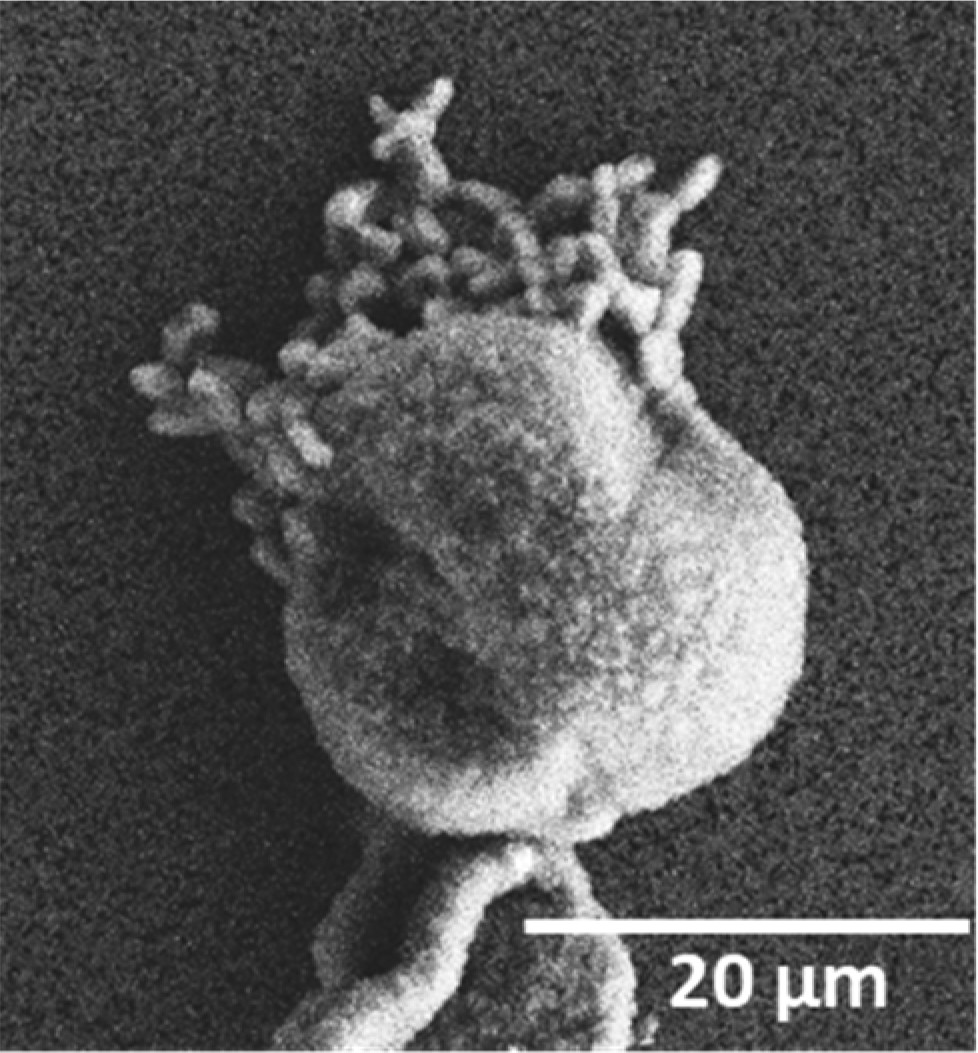
In the ASR project and elsewhere, Steiner studies biological aerosols that start as pollen. Plant pollen is a mass of dust-like particles. In the mid-latitude regions of Earth, pollen is present in the atmosphere in large, yet widely variable amounts.
“Pollen pulses (into the atmosphere) at different times,” Steiner says, in patterns that depend on seasons, winds, and regional vegetation. “Something is almost always pollinating wherever you are in the United States.”
Yet, the climate drivers of pollination are little known.
During the ASR project, among other things, Steiner and her group designed simulations of pollen emissions. Her models include estimates of what Steiner calls “sub-pollen particles.”
During rainfall events, or even episodes of high relative humidity, increased osmotic pressure can cause pollen to swell and rupture. That can suddenly turn one particle into hundreds or thousands.
Such “rupture events” were the subject of a landmark 2020 paper on aerosol nanoparticles released by fungi in periodic bursts. Lead author Michael J. Lawler, now at the University of Colorado Boulder, has collaborated with Steiner to understand these rupture events.
Rupture events disperse sub-micron particles as small as 30 nanometers wide. (For pollen, these bits are mostly starch granules.)
These sub-pollen particles last longer in the atmosphere. They linger to seed ice in deep convective clouds, the kind that make thunderstorms. Chaff-like, they help clouds scatter more solar radiation. Such particles also act as cloud condensation nuclei, a type of aerosol that can suppress precipitation.
Estimating Particle Emissions
The first paper to come out of Steiner’s ASR project, with Michigan research fellow Tamanna Subba as lead author, appeared in August 2021. It modeled estimates of particle “rupture events,” as well as particle emissions.
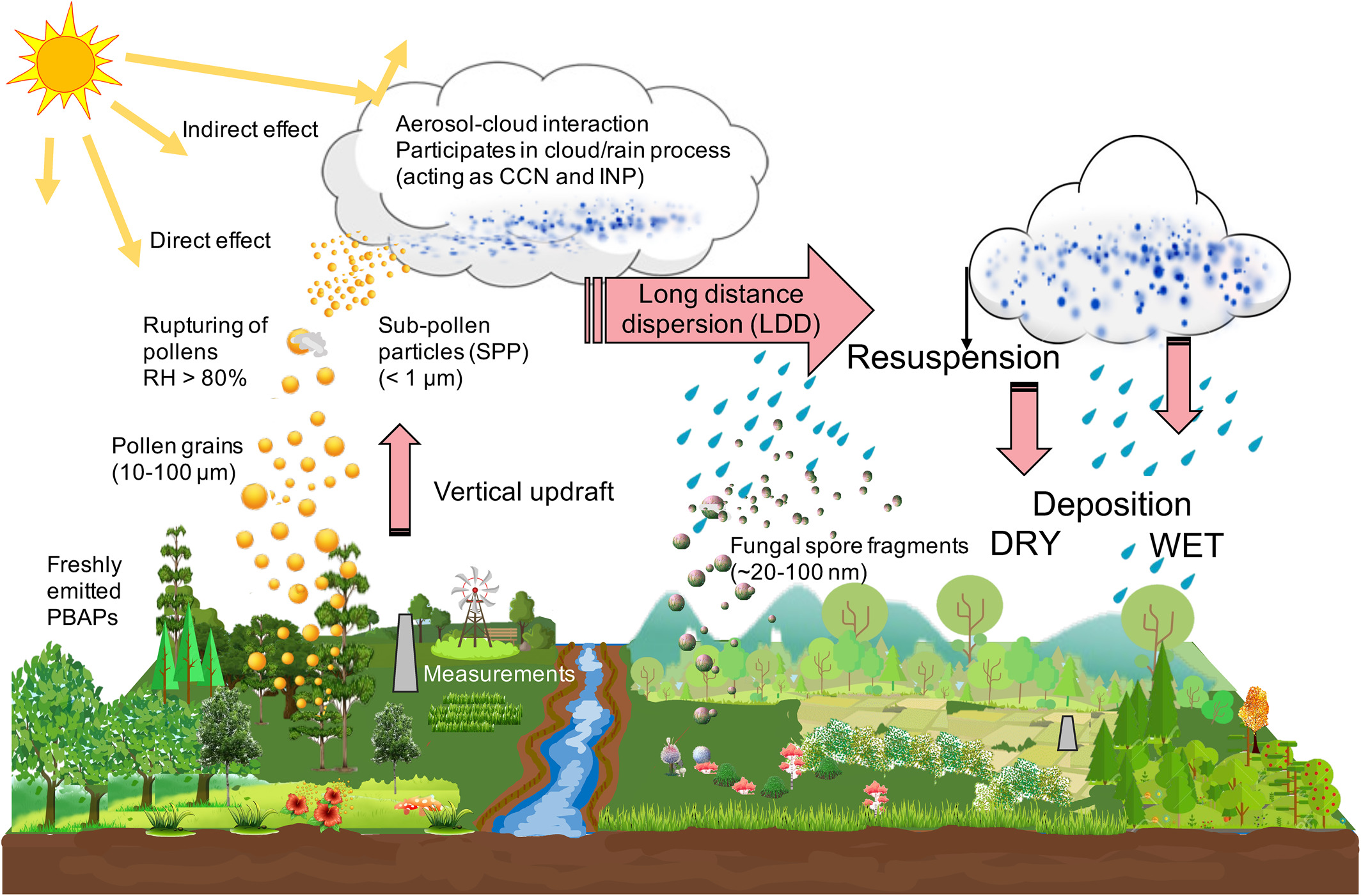
The paper drew on 10 years of extensive aerosol data from the Southern Great Plains (SGP) atmospheric observatory in Oklahoma. The SGP is operated by Atmospheric Radiation Measurement (ARM), a DOE Office of Science user facility closely linked to ASR.
The observatory does not have the capacity to directly measure aerosols of biological origin. However, Subba and Steiner leveraged two urban stations in Tulsa and Oklahoma City to measure pollen counts. They tapped data from surface lidar observations to identify non-spherical particles on days with an aerosol fraction with high-organic content.
The researchers also found a way to distinguish biological fragments from dusts commonly found in agricultural regions. Mostly minerals, such dusts have aerosol profiles and chemistries of their own.
In all, the authors found that PBAP pollen fragments and fungal spores appear in rupture events about 32 days every year. The authors say this is “an important component of the aerosol budget,” and a first-time estimate of how frequently such biological aerosols occur.
At the same time, they concede that “substantial uncertainties” remain. That’s because most surface observatories do not have the instruments to count such particles or describe their properties.
Other papers based on the ASR work will appear soon, says Steiner.
One of them investigates how squall-line thunderstorms influence rupture events. Such storms are groups of convective cells that can be over a hundred miles long but only 10 or so miles wide. They move quickly and pack “squalls,” intense episodes of heavy rain and high winds.
‘Thunderstorm Asthma’
The tiny biological particles Steiner studies are small enough to defeat the filter-like defenses in the human nose and throat and lodge in lung tissue.
Because fragments of pollen persist for several hours after a rain event, they cause a sudden onset of storm-related breathing issues called “thunderstorm asthma.” However, it is little known or studied.
To Steiner, bits of ruptured pollen and fungi pulsed into the atmosphere represent a frontier of particle research. That frontier touches the world of both atmospheric and medical science.
Among atmospheric scientists, says Steiner, biological aerosols are getting more attention than ever―despite having what she calls “a smaller slice of influence” on climate change than anthropogenic aerosols.
As for the world of medical science, why not study these biological particles and their climate drivers? About a third of Americans, she estimates, have seasonal allergies related to pollen.
“Health, to me, is a great motivator,” says Steiner, even in the world of atmospheric research.
In 2021, she coauthored a paper linking allergenic pollen levels in Ohio to rates of suicide. (The correlation turned out to be weak, though further investigation is warranted.)
In addition, Steiner’s work on modeling the surface-atmosphere connections to algal blooms in western Lake Erie has opened the door to research that seems to link one toxin in such blooms to amyotrophic lateral sclerosis (ALS), a progressive neurogenerative disease. Steiner is looking for funding to investigate related aerosolized pathways.
“Only 20% (of ALS) is genetic,” she says.
A Great Lakes Laboratory
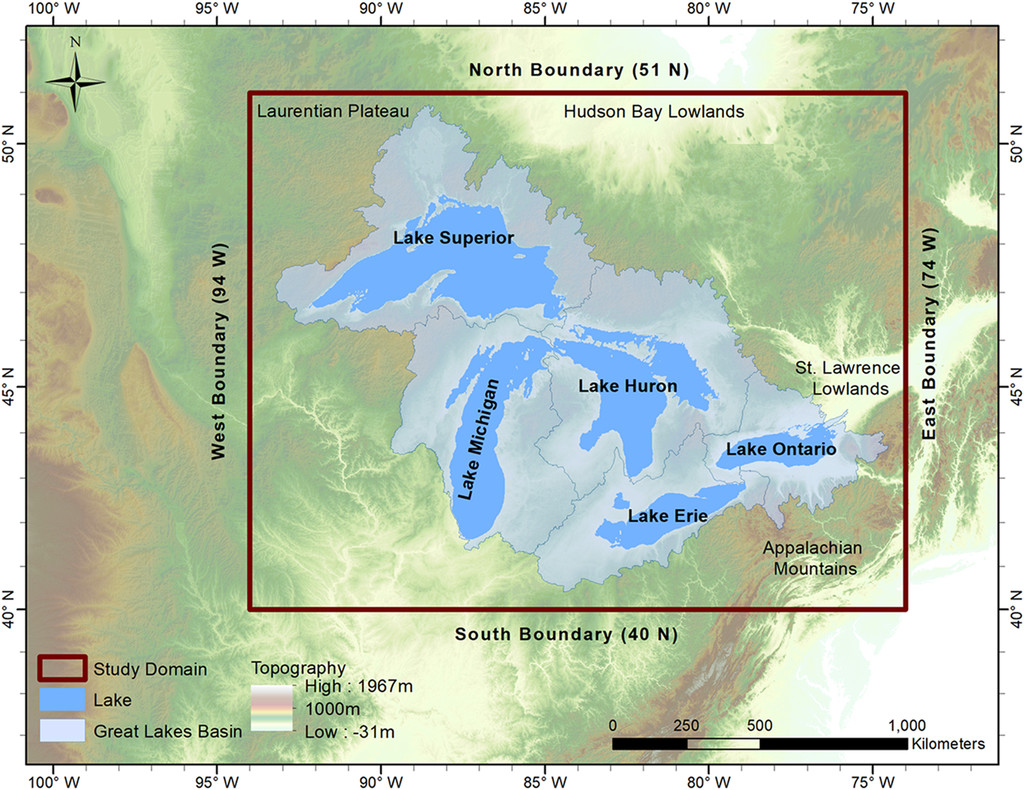
Steiner’s ASR project work illustrates that the bulk of her research goes into atmospheric queries, mostly from her point of view as a modeler.
Steiner is interested in the emissions and effects of biological particles, of course. She also has research underway on biogenic trace gases, weather in the boundary layer, regional climate modeling, and the biosphere-atmosphere interface.
That interface was the subject of a solo-author paper in 2020. She spelled out the dynamics of the biosphere’s interaction with the atmosphere―and the role of that interface in simulations of coming climate and global change. The biosphere, after all, determines some of the conditions that drive climate, including soil moisture, temperature, and the light environment.
The light-diffusing leaf surface of boreal regions is chemically active. Its vegetation emits biogenic volatile organic compounds like isoprene, setting off feedbacks in the lower boundary layer that influence temperature.
Some of Steiner’s biosphere-atmosphere research centers on her backyard in Michigan, which is dominated by the Great Lakes. These large, interconnected freshwater bodies contain about a fifth of the world’s fresh surface water―an estimated 6 quadrillion gallons.
All five are large enough to have sea-like characteristics, including deep water, far horizons, and rolling waves. The Great Lakes border eight U.S. states. Only one state, Michigan, touches four of the lakes.
To Steiner, the lakes are the ideal outdoor laboratory to study biosphere-atmosphere interchanges at the regional scale. In addition, the region is attractive for research, in part because such freshwater bodies are seldom represented in weather and climate models at any scale.
The Great Lakes region is also interesting from a chemistry perspective, says Steiner. That includes the complex aerosol influences of water spray kicked up by winds and waves breaking on shorelines.
She coauthored a May 2021 paper on lake spray aerosol emissions. It demonstrated a new way to represent the size, chemistry, and regional impact of such spray. The study was led by Michigan postdoctoral research fellow Anahita Amiri-Farahani.
Land-Atmosphere Coupling
The Great Lakes are part of Steiner’s way of looking at the world: a complex interaction of land and water at the surface and the atmosphere above.
Steiner was part of a June 2021 workshop on land-atmosphere interactions. (Her presentation was captured on YouTube.)
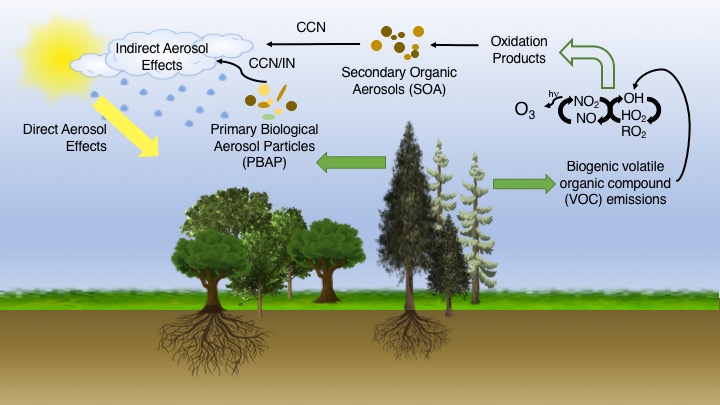
The meeting included ecosystem scientists who study energy (solar radiation) and water (precipitation) fluxes at the surface. Paired with them were atmospheric scientists who use ARM data and ASR funding.
During her talk, Steiner made a plea for measuring the short-lived biogenic trace gases she studies, as well as primary aerosols of the kind represented by pollen fragments.
Most of these “are not routinely measured” by flux towers, such as those maintained by the AmeriFlux network, a workshop partner. But biogenic aerosols could be important to understanding the land-atmosphere feedback system.
Some of those attending the workshop, like Steiner, are also part of a science team designing a plan for deploying an ARM mobile observatory in the southeastern United States. It will operate for five years, starting in 2023.
Getting to Atmospheric Science
When Steiner had that brief, life-changing encounter at the Potomac River, she was just a few years out of chemical engineering studies at Johns Hopkins University in Maryland (B.S. 1994).
But in a way she was ready to make the leap to atmospheric science. As a junior in high school in rural Pennington, New Jersey, Steiner was a good all-around student, with no plans to be a scientist. But that same year, she read James Lovelock’s Gaia: A New Look at Life on Earth (1979).
The author paints a picture of Earth as a self-regulating organism whose components―land, sea, and air―operate as a single entity, animated by feedback cycles. Entwined in the Gaia narrative was the idea that the atmosphere was part of the living biosphere―not just a cloak of air and weather.
The simultaneous practicality and elegance of such ideas appealed to Steiner, whose father was a materials engineer. It also appealed to her sense of the world as an intricate and beautiful single ecosystem―a sentiment honed by oceanside summers on nearby Long Beach Island.
To get even close to the same sense of wonder, Steiner has to depart her university office for family sojourns at Sleeping Bear Dunes on the northeast shore of Lake Michigan. (She has two children. Her husband is a software developer.)
Doctoral Influences
For graduate school, Steiner headed to the Georgia Institute of Technology (PhD 2003). The whitewater scene was even better there, she says. But better still was the work, which gave her appetite for applied chemistry a place to go: the atmosphere.
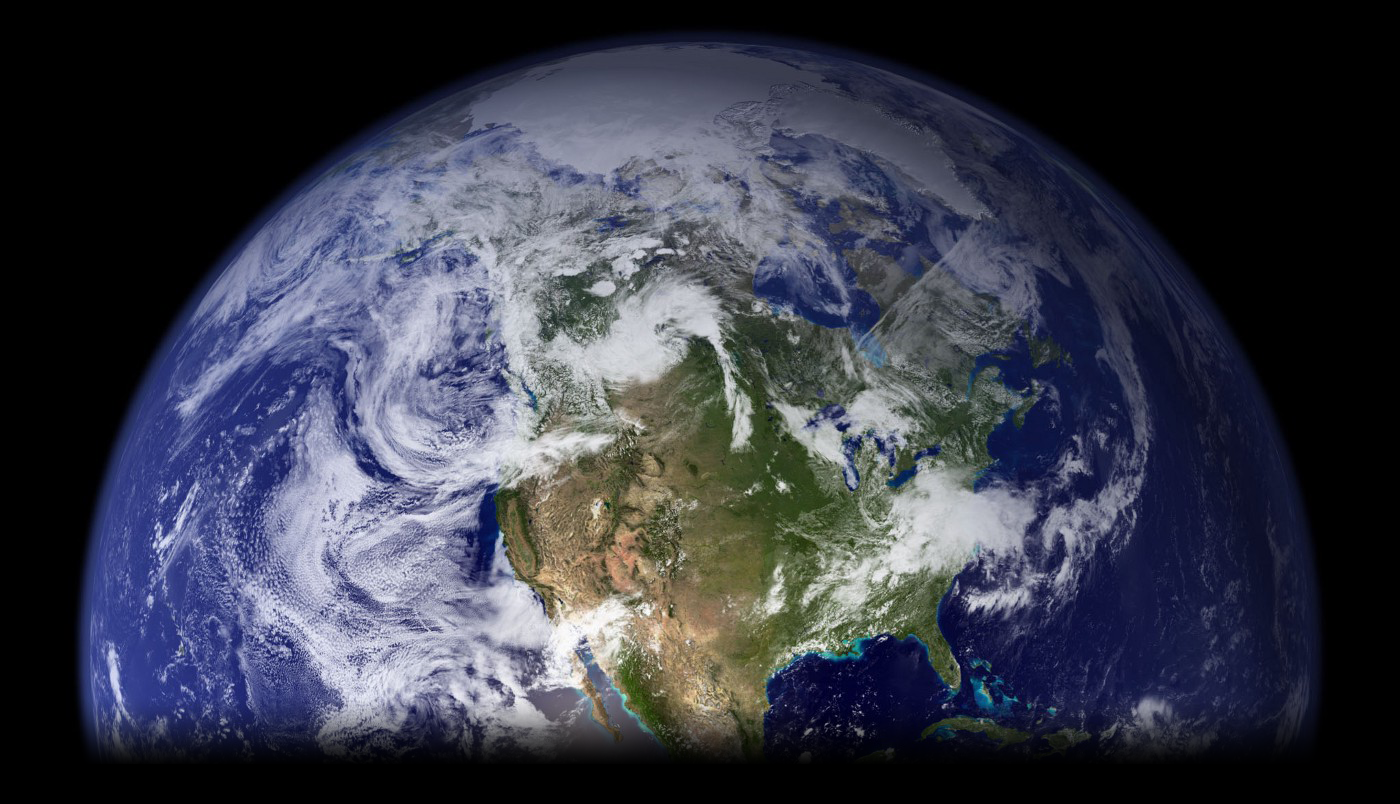
Steiner had two chief mentors at Georgia. Each represents interests that still abide in her own career.
Robert E. Dickinson, now retired from the University of Texas, Austin, is an expert on the land-atmosphere interface and modeling land-surface processes.
William Chameides, now retired from Duke University, wrote a landmark 1988 paper on isoprene, a natural hydrocarbon that can contribute to ground-level ozone. He introduced Steiner to isoprene and other examples of biogenic chemicals emitted from vegetation that have big influences on the atmosphere.
Millions of tons of the organic molecule isoprene are emitted every year by trees and shrubs. It’s a reactive hydrocarbon gas that can combine with other chemicals to form aerosols and ground-level ozone.
Regional Modeling
During graduate school, Steiner spent months off and on in Trieste, Italy. She studied regional modeling with Filippo Giorgi, a pioneer of mesoscale models―a pursuit then barely two decades old.
From there, her dissertation rolled off the page. It investigated the role of land-atmosphere feedbacks in East Asia, with a focus on emissions of natural volatile organic compounds.
Today, those compounds and the whole family of biological particles (especially those emitted from land) still form the heart of Steiner’s science enterprise. They are small and intermittent but have weight in the atmosphere.
As she says of pollen, “it’s not going to be important everywhere all the time. But (I am) looking at the bigger picture.”
# # #Author: Corydon Ireland, Science Writer, Pacific Northwest National Laboratory
This work was supported by the U.S. Department of Energy’s Office of Science, through the Biological and Environmental Research program as part of the Atmospheric System Research program.

